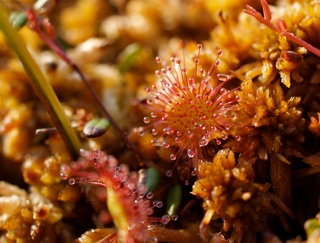Wetlands
Peatlands are unique and beautiful ecosystems that accumulate dead organic matter, or simply ‘peat’. This accumulation occurs where plant productivity exceeds soil losses via decomposition, leaching, and disturbances such as wildfire. As peat accumulates slowly over millennia carbon from the atmosphere is stored as peat in these ecosystems. Today peatlands store an estimated 30% of the world’s soil carbon pool. However, peatlands also serve as a net source of methane, which is a powerful greenhouse gas.

The majority of the world’s peatlands are found in the boreal biome and include bogs, fens, moors, mires, pocosins, and muskegs. Northern peatlands can be forested, shrubby, or open (no trees). There are two major types of peatlands: ombrotrophic bogs and minerotrophic fens. The ground-layer of bogs is dominated by Sphagnum mosses while fens can be dominated by a variety of mosses or herbaceous species. Because of its unique chemistry, Sphagnum further inhibits decomposition and promotes peat accumulation.

In addition to global carbon cycling, peatlands play an important role in regulating permafrost and hydrological cycles due to the strong insulation and water retention of peat.
 B
B

